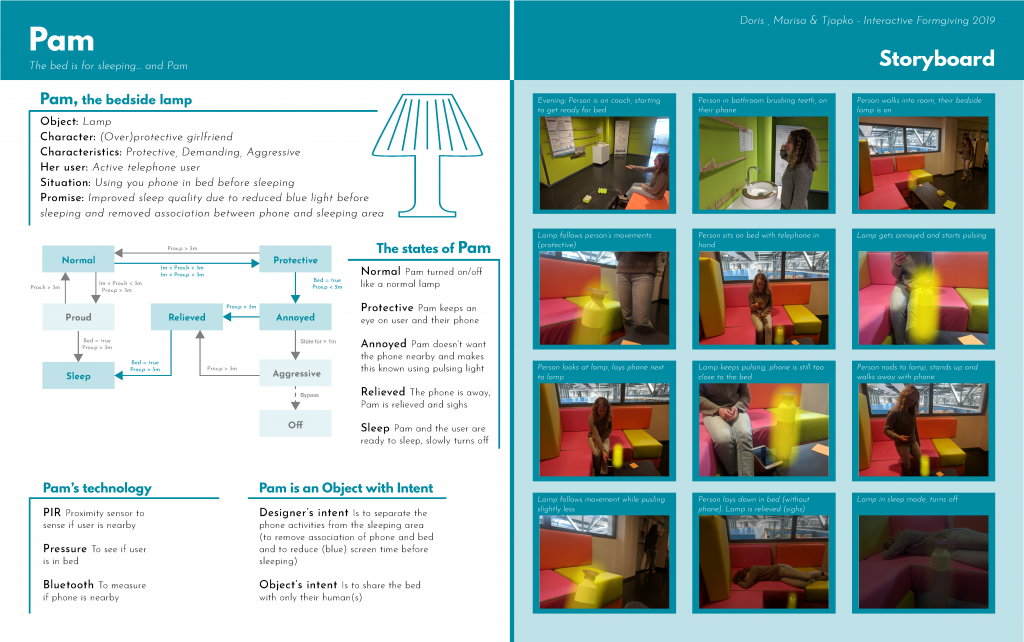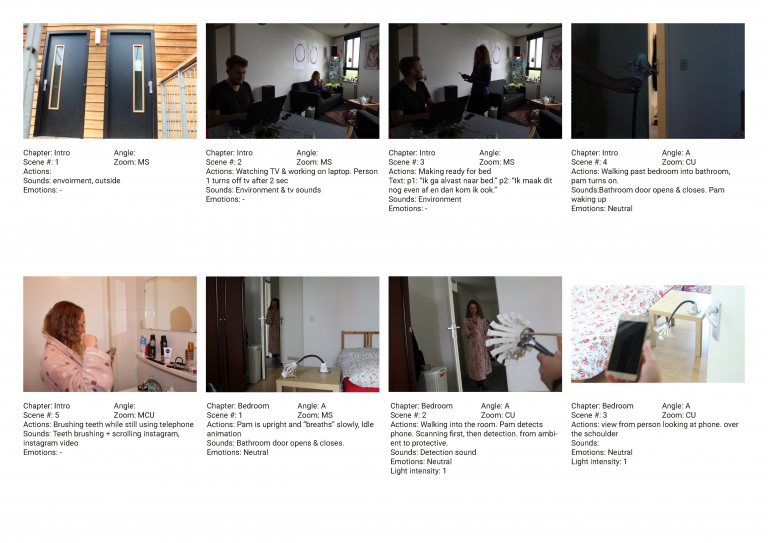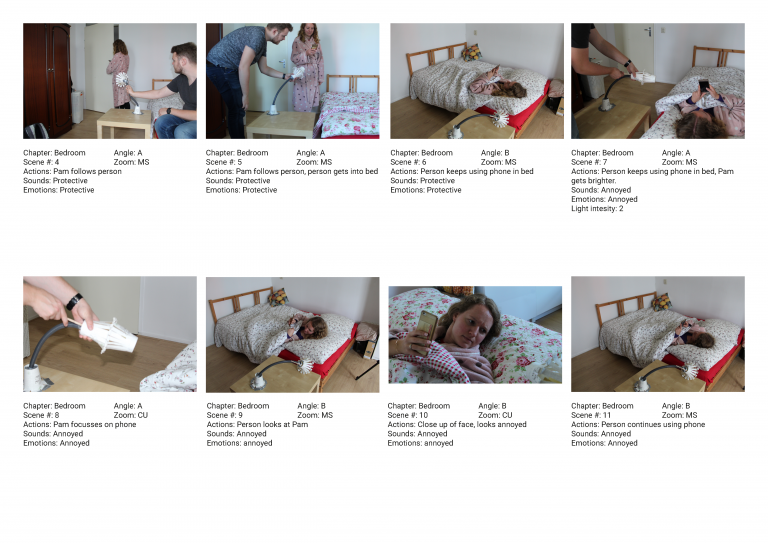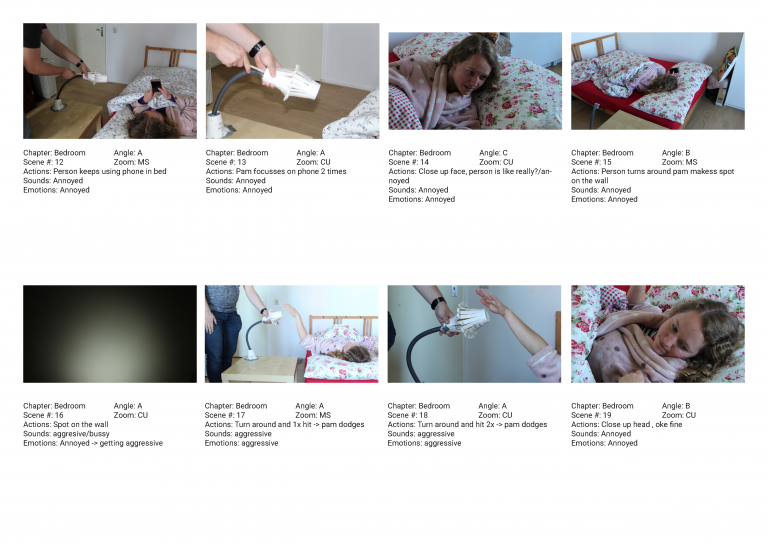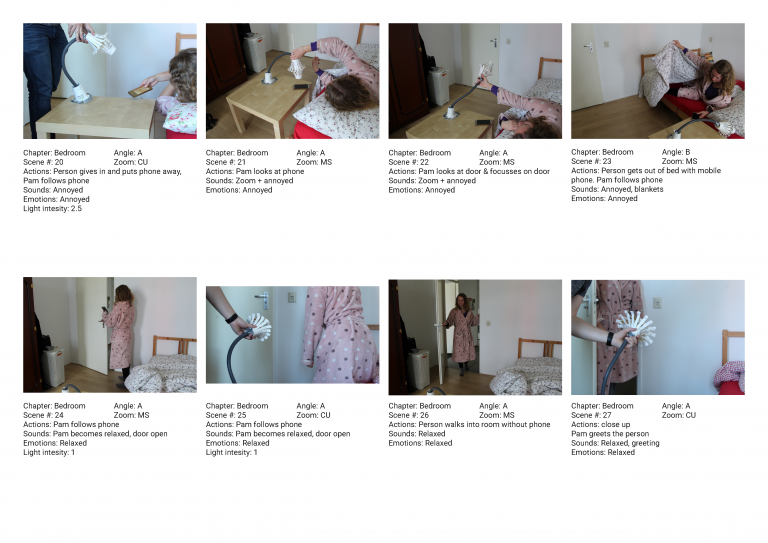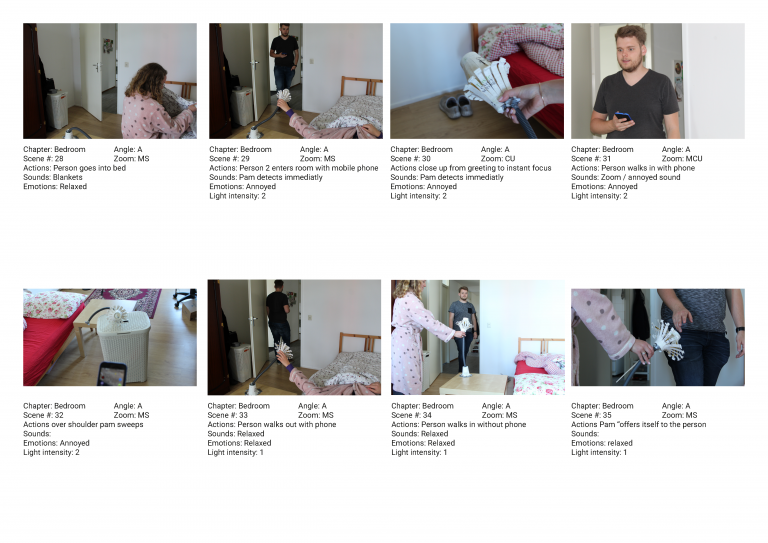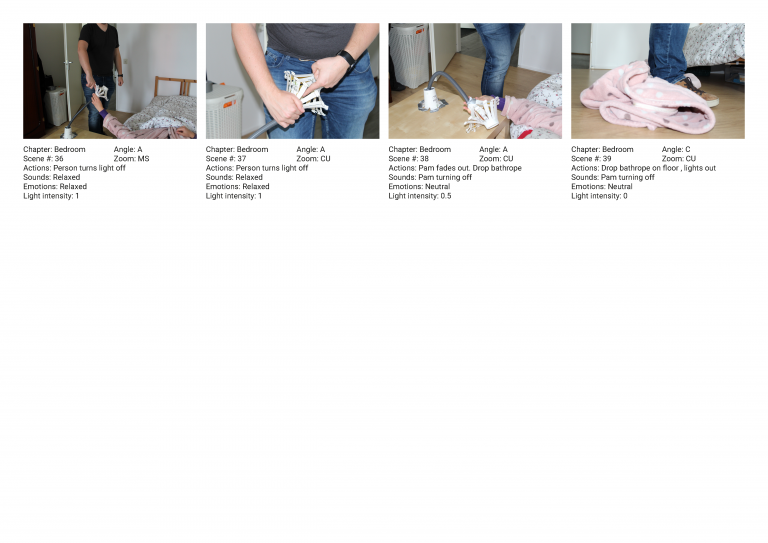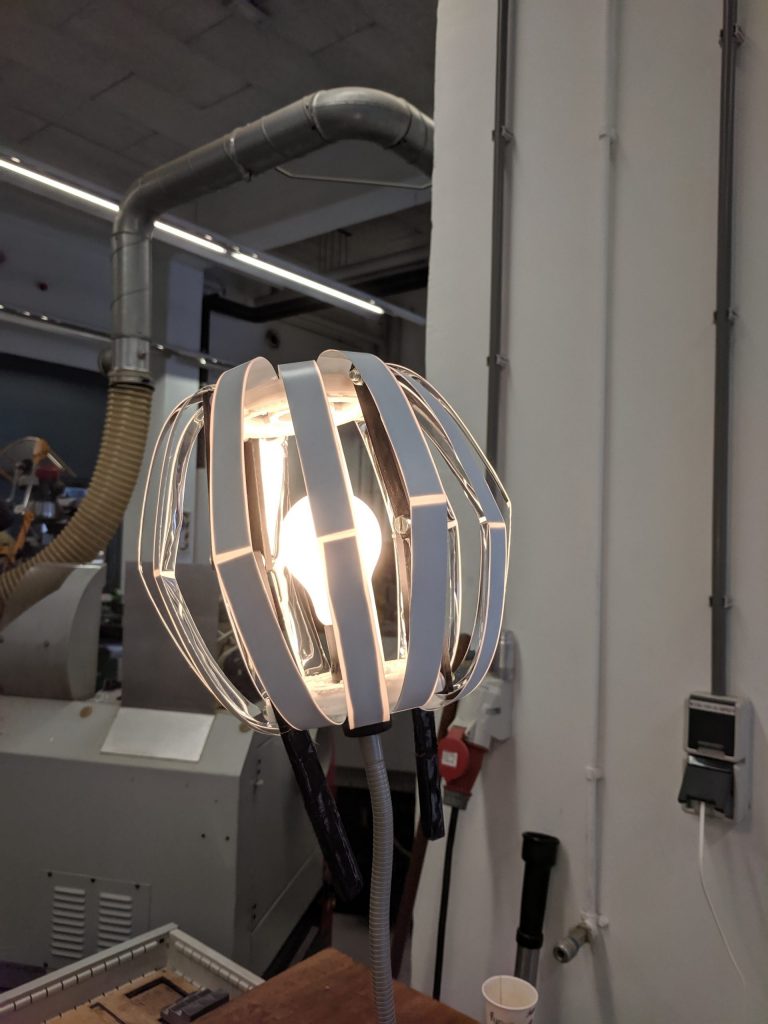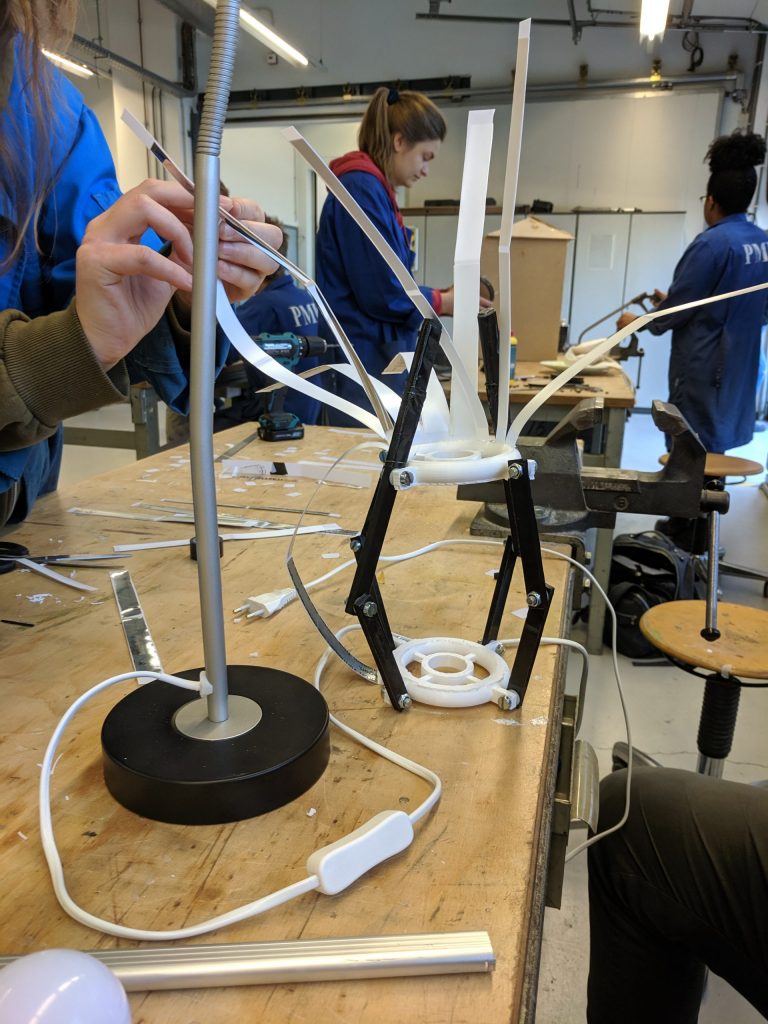Pam
Pam
The interactive bedside lamp
Project details
Project type:
ECTS:
Time:
Client:
Nature:
Keywords:
Elective
3
2019
TU Delft
Group Project
Design fiction, Interaction design, Interviews, Product design, Prototyping, User observations & UX
Project type:
ECTS:
Time:
Client:
Nature:
Keywords:
Elective
3
2019
TU Delft
Group Project
Design fiction, Interaction design, Interviews, Product design, Prototyping, User observations & UX
Summary
For the course, “interactive formgiving”, the assignment was to design an Object with Intent (OwI) through user research, prototyping and design fiction. OwI is a new perspective on smart objects (Rozendaal, Boon, & Kaptelinin, 2019). They are everyday objects that act as collaborative partners in human activity. The product we designed is an interactive bedside lamp that helps with smartphone usage at bedtime. This lamp does not tolerate the usage of a smartphone in bed and goes from being annoyed to aggressive and annoying.
Process
To design an OwI we utilised video and WoZ prototyping. This allowed us to create quick prototypes and test, enact and specify behaviour. This allowed us to design and intelligent product without having to actually program and create it. This process consisted of creating a first version of the product, testing it, and using the results to itterate and create a final video.
Concept
To design this we first decided on a product and context. A bedside lamp that helps you with phone usage in bed. From there we looked at what behaviour characteristics the product should have. For this, we went with an overprotective girlfriend that is also demanding and aggressive. Based on these characteristics a storyboard, behaviour flow and an early prototype were created. This behaviour was then sketched out in a video.
Early prototype
This prototype was then used in a wizard of oz (WoZ) style user test. In this test, we enacted the behaviour of the product to see how users responded and find what kind of behaviour is desired. During this test, there was a dialogue between the users and the designers. During this, we went into specifics with regards to the behaviour and how the behaviour felt.
Final design
Based on the feedback from the users we iterated on the prototype and its behaviour. The behaviour was finetuned by creating a video of a scenario in which the object enacts its behaviour. Through the creation of the video, the behaviour became concrete and detailed. Sound effects were also added as an additional layer to further communicate and solidify the character of the bedside lamp.

